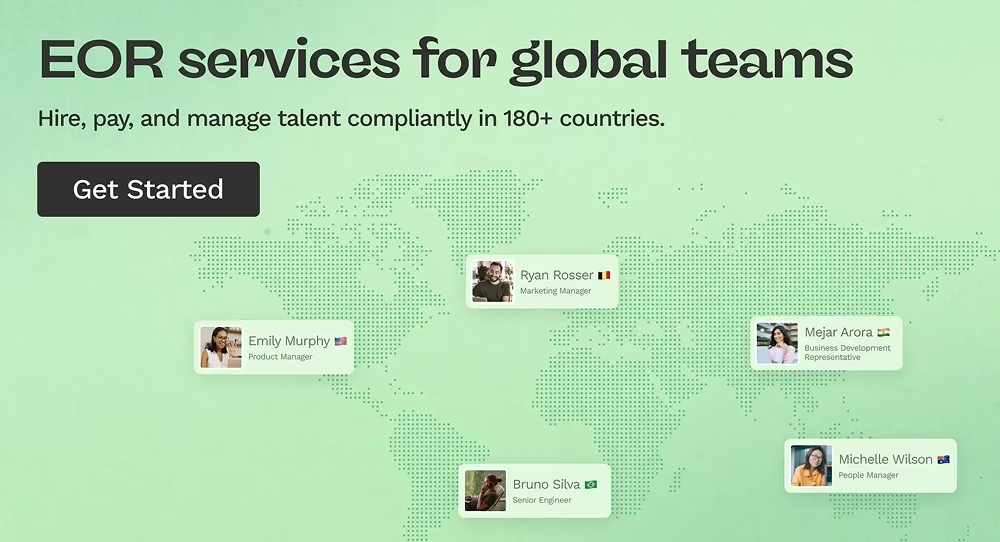When a team member isn’t meeting expectations, documenting the issue with care and consistency is the first step to turning things around. An employee write-up form gives managers a structured, fair way to address performance or conduct concerns and support accountability across the organization.
Used well, write-ups aren’t about punishment—they’re about setting clear expectations, reinforcing policies, and giving people a chance to improve. But they also provide the documentation your company may need to protect itself legally if further action becomes necessary.
In this guide, we’ll explain when to use a write-up form, what to include, and how to create one that works for both your team and your policies.
What is an employee write-up form?
An employee write-up form is a formal record used to document a serious conduct or performance issue after earlier efforts, such as verbal feedback, haven’t led to change. It typically outlines the behavior, identifies policy violations, and explains the expected improvement.
Write-up forms also create a paper trail that supports your internal processes—from coaching and documentation to more serious actions. Those might include a performance improvement plan (PIP), which outlines clear goals and timelines for correcting behavior or performance issues, or termination. A well-documented employee write-up form helps ensure that decisions happen based on facts, not personal judgment.
Why are employee write-up forms important?
Most managers don’t look forward to writing up a team member. But when performance or conduct doesn’t improve after earlier conversations, a write-up becomes an important part of a fair, consistent disciplinary process.
Whether you’re managing a global team or a local branch, documenting issues clearly protects both your people and your organization. A well-prepared write-up helps ground decisions in facts and patterns—not memory or personal interpretation.
Here’s why these forms matter:
- They create a reliable record of employee conduct: Written documentation helps establish a timeline of behavior or performance concerns, especially if someone transitions between departments or teams.
- They support further disciplinary action if necessary: If verbal coaching doesn’t improve, managers can issue a documented write-up to support progressive disciplinary action such as suspension or dismissal for poor performance.
- They provide clarity around expectations and next steps: Knowing how to write up an employee correctly helps managers communicate exactly what needs to improve, how long the employee has to make those changes, and what happens if the issue continues.
- They help ensure fairness and compliance: By using a standardized write-up process, you reduce legal exposure, demonstrate consistent and equitable policy enforcement, and help prevent claims of bias.
The document write-up becomes a reference point for positive growth if the behavior improves. If it doesn’t, it becomes the necessary documentation for whatever comes next. Either way, it's a tool for progress, not punishment.
Beyond performance management, a write-up also serves as a legal safeguard. In cases where an employee challenges their termination, a well-documented write-up can provide the paper trail needed to show that you acted fairly, consistently, and in line with policy.
When to use an employee write-up form
While a verbal conversation or coaching session may resolve a one-time concern, repeated issues or serious policy violations often require formal documentation. A write-up form helps managers track patterns, set clear expectations, and escalate the matter when needed.
That said, not every issue warrants a write-up. For isolated mistakes tied to unclear expectations or training gaps, informal coaching may be more effective. Formal action should reflect the seriousness of the behavior and follow your company’s discipline policy.
Write-ups are most effective when they reinforce shared expectations after earlier efforts haven’t worked. When used thoughtfully, they can reset the tone, clarify next steps, and open the door to meaningful improvement. Jumping straight to formal documentation for a minor, one-off issue, however, can feel disproportionate and create more tension than clarity.
Here are examples of when using a write-up form makes sense:
- Ongoing attendance issues: If an employee repeatedly arrives late or misses work without prior notice, despite previous conversations, documenting the behavior helps establish a pattern and set expectations for change.
- Consistent underperformance: When someone fails to meet job responsibilities, deadlines, or quality standards over time, a write-up creates space to define the issue and what needs improvement. You can learn how to assess employee performance to support long-term success.
- Violations of workplace policies: Breaches like mishandling data, disregarding safety protocols, or breaking confidentiality agreements should be formally recorded, especially when the issue poses legal, operational, or reputational risks. You might have policies outlined in a handbook—referencing them can help clarify expectations.
- Unprofessional or disruptive behavior: If a team member is repeatedly disrespectful, confrontational, or unwilling to follow instructions, documenting these actions helps protect the team dynamic and organizational standards.
- Inappropriate use of company property: Whether it’s unauthorized use of equipment or misuse of systems, managers should track these types of actions and address them in writing.
- When someone’s behavior affects others: If the conduct in question creates a hostile work environment or lowers team morale, formal documentation gives managers a tool to respond fairly while protecting employee well-being.
Disciplinary write-ups: Example
A well-structured write-up form captures the full context of an incident and outlines a clear path forward. It’s helpful to include a summary of any previous corrective action, along with what’s expected moving ahead.
At a minimum, the form should include the employee’s and manager’s names, incident date, relevant policy violations, and space for both parties to sign. Once completed, the form should be securely stored in the employee’s personnel file.
Here’s what a typical employee write-up might look like:
Best practices to create an employee write-up form
Write-ups are meant to guide, not punish. A well-handled form can reinforce expectations and help build a workplace culture rooted in clarity, fairness, and accountability. Here’s how to make the most of write-ups:
- Keep your tone calm and respectful: Whether you're documenting a first-time issue or a repeated concern, approach it professionally. Avoid emotionally charged language and focus on supporting the employee’s success.
- Treat the form and conversation as confidential: Disciplinary records should be shared strictly on a need-to-know basis, typically between the employee, supervisor, manager, and people ops. Keeping this information private protects employee trust and minimizes risk if the situation escalates.
- Stick to objective, observable facts: Avoid vague claims like “bad attitude” and cite specific actions, such as “missed three client calls within two weeks.” A fact-based approach helps everyone understand what happened and avoids misunderstandings that could lead to unfair dismissal claims.
- Ensure alignment with company policies: When documenting expectations or consequences, refer to your internal policies or employee handbook. This reinforces the idea you're following a clear, shared standard and opens the door for discussing opportunities for employee development, especially when improvement is possible.
- Standardize your format and follow-through: Use a consistent write-up template across teams. This allows your people ops team to spot trends, treat similar situations equally, and ensure that the process stays fair and compliant.
Trust an experienced partner for your HR operations
When you’re managing teams across borders, the stakes are higher. Even small oversights can lead to costly delays or compliance risks, from local labor laws to documentation requirements. That’s why having a partner who understands the full complexity of global employment is a must for any international team.
Oyster gives you that confidence. With access to legal experts and specialized support teams, you can navigate every stage of the employment journey—from onboarding to offboarding—with clarity, professionalism, and peace of mind. Whether drafting a write-up form or building a global performance process, Oyster helps you do it right wherever your team works.
Looking for support that scales with your business? Learn more about how Oyster’s strategic partnership can help you strengthen your global people operations.

About Oyster
Oyster is a global employment platform designed to enable visionary HR leaders to find, engage, pay, manage, develop, and take care of a thriving distributed workforce. Oyster lets growing companies give valued international team members the experience they deserve, without the usual headaches and expense.
Oyster enables hiring anywhere in the world—with reliable, compliant payroll, and great local benefits and perks.
.webp)



.webp)
.webp)
.webp)
.avif)

.webp)
.webp)

